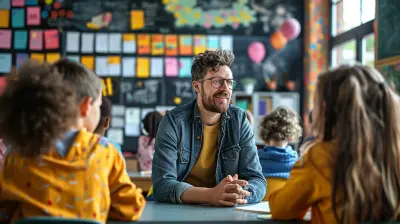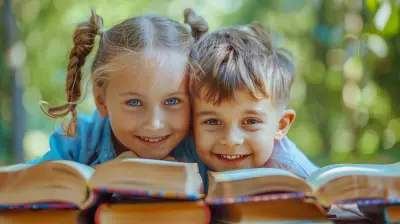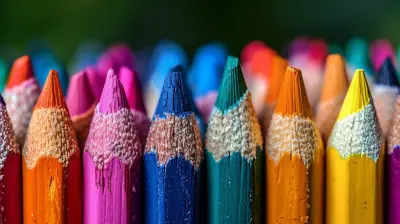Gifted Education and the Importance of Cross-Disciplinary Learning
27 August 2025
When we talk about gifted education, most people immediately think of advanced math classes, top-tier science labs, and academic competitions that would make the average student’s head spin. But here's the thing—gifted education is (or at least should be) much more than just harder versions of regular subjects. What if I told you that the secret sauce to truly unlocking the potential of gifted learners is cross-disciplinary learning?
Sounds fancy, right? But don’t worry—I’ll break it down, keep it conversational, and by the end, you’ll see why connecting dots across subjects might just be the smartest way to nurture genius.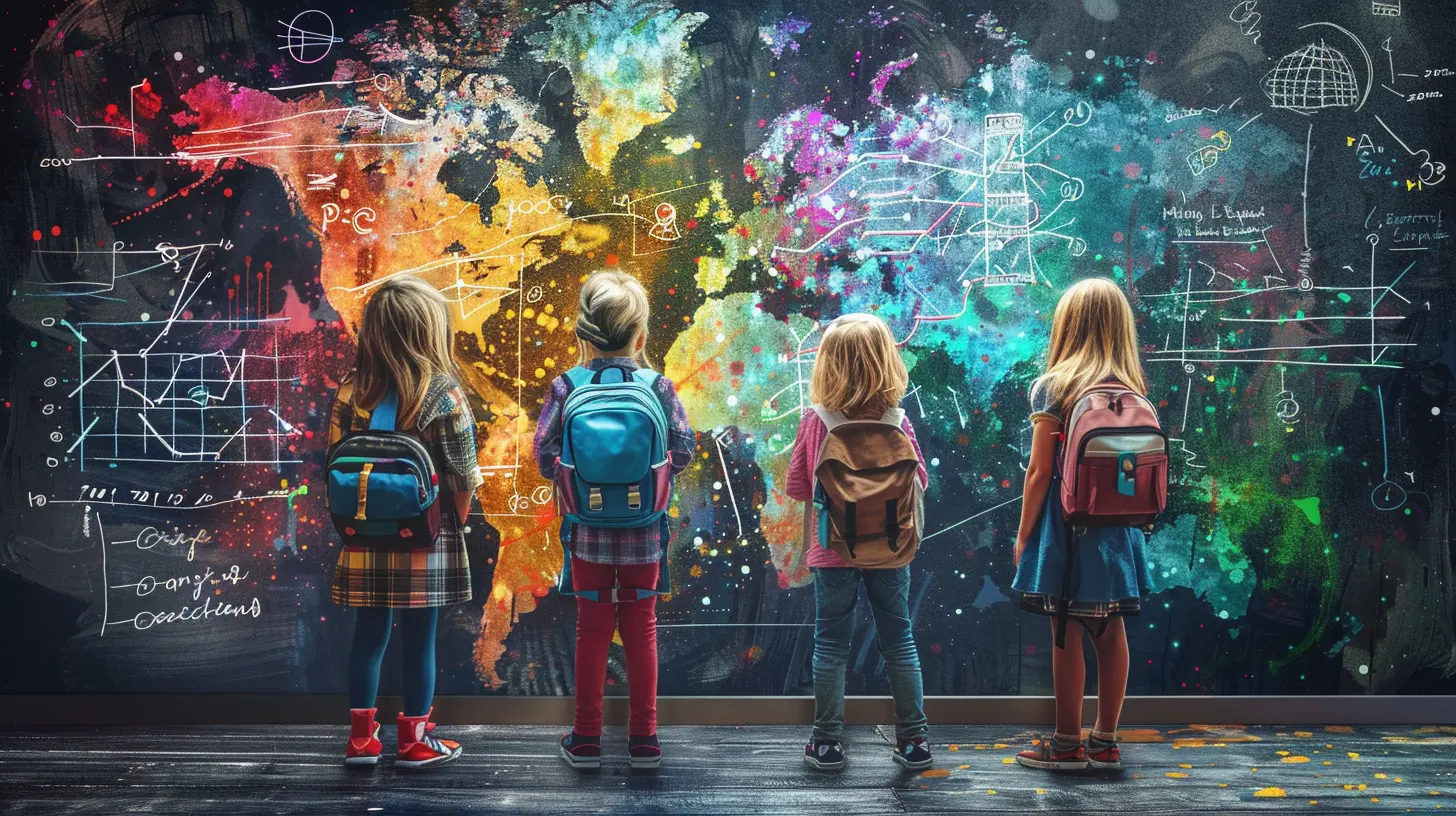
What is Gifted Education, Anyway?
Let’s kick it off with the basics. Gifted education refers to specialized teaching methods, programs, and strategies designed to support students who show exceptional abilities. These kids grasp concepts at lightning speed, think creatively, and often ask questions that make teachers pause and say, “Hmm, great question!”But here’s the catch—gifted students aren’t just little Einsteins in lab coats. Their minds don’t fit neatly into boxes labeled “Math,” “History,” or “English.” That’s where traditional education systems often fall short—they treat subjects like isolated silos.
So how do we fix that? That’s where cross-disciplinary learning comes into play.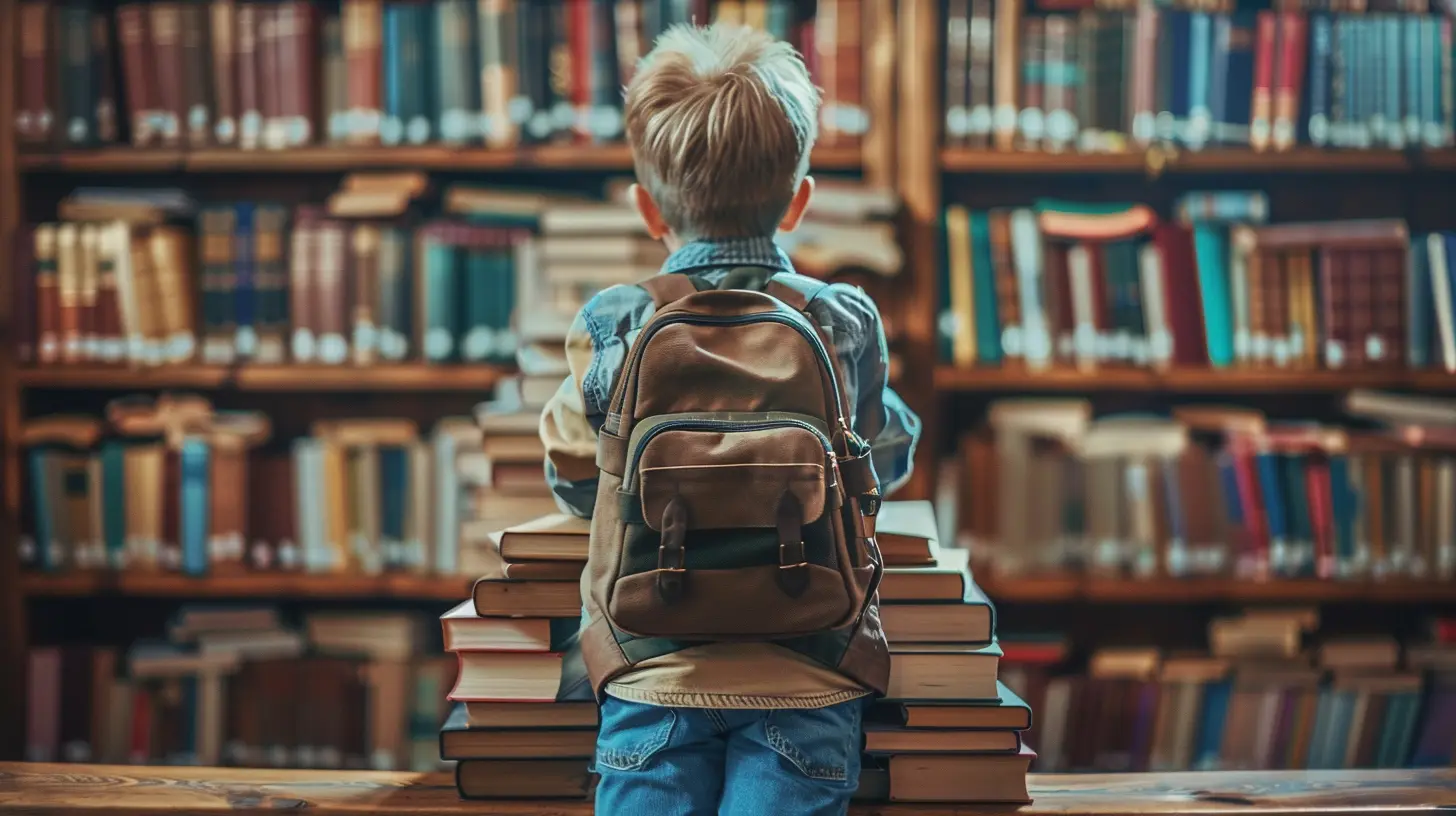
The Limits of Traditional Education for Gifted Learners
Think back to your school days. Remember when subjects were taught as if they existed on separate planets?- Math in one room.
- Literature in another.
- Science somewhere down the hall.
But guess what? The real world doesn’t work like that. Problems out there are messy. They don’t care about academic boundaries. And that’s especially frustrating for gifted students who naturally want to connect the dots.
They might wonder how mathematical patterns show up in music theory, or how historical events influenced scientific discoveries. But if no one connects those dots for them—or encourages them to do it themselves—those brilliant sparks can fizzle out.
Gifted learners need more than just depth. They need breadth. They need to see the big picture.
What Is Cross-Disciplinary Learning?
Let’s cut through the jargon.Cross-disciplinary learning (sometimes called interdisciplinary or transdisciplinary learning) simply means blending subjects together. It’s about tackling one big idea or problem by pulling knowledge from multiple disciplines at once.
Think of it like cooking. You don't eat raw onions, plain flour, and uncooked meat all separately, right? You mix them together to create something flavorful. That’s what cross-disciplinary learning does—it creates intellectual meals instead of isolated snacks.
Instead of just reading Shakespeare in English class, students might explore:
- The historical context of Elizabethan England (History)
- The mathematical structure in sonnets (Math)
- Psychological motivations of characters (Psychology)
- Political impact of literature (Politics)
Suddenly, a play becomes a playground of ideas.
Why Cross-Disciplinary Learning is Crucial for Gifted Students
Let’s dive deeper into why this approach is a perfect match for gifted learners.1. Encourages Critical and Creative Thinking
Gifted kids aren’t just looking for answers—they’re looking for better questions. When they approach a topic from multiple angles, it forces them to think critically and creatively. They go beyond memorizing facts and start analyzing, synthesizing, and reinventing ideas.Ever notice how some of the most groundbreaking innovations come from unexpected intersections? Think Steve Jobs blending tech with design, or Da Vinci mixing science with art. That’s the power of thinking across boundaries.
2. Mirrors Real-World Problem Solving
In real life, problems don’t come labeled “Chapter 5 in Chemistry.” They’re complex. Solving them might require statistics, ethics, technology, and public speaking—all rolled into one.Cross-disciplinary learning helps gifted students practice this kind of thinking. They learn how to integrate skills and knowledge in a way that’s much more aligned with how the world actually works. It’s like a simulation for real life.
3. Boosts Engagement and Motivation
Let’s be honest—gifted learners can get bored. Fast.When they’re forced to stay within rigid academic lines, it kills their curiosity. But mix things up? Show them how architecture connects with geometry and art? That’s when the magic happens. Suddenly, school feels relevant. It feels alive.
And when students are engaged, everything else—motivation, performance, even mental health—gets a boost.
Real-World Examples of Cross-Disciplinary Learning in Gifted Education
Let’s walk through how this all looks in action.STEAM Projects
You’ve probably heard of STEM—Science, Technology, Engineering, and Math—but STEAM adds the “A” for Arts. It’s a game-changer.In a STEAM project, gifted students might:
- Design a sustainable tiny house (Engineering + Math)
- Create a business plan for it (Economics)
- Build a scale model (Art)
- Present their findings (Language Arts)
That’s a whole buffet of disciplines united under one creative umbrella.
History Through Multiple Lenses
Instead of just reading about the Civil Rights Movement, students might:- Analyze political policies of the time (Government)
- Assess economic disparity (Economics)
- Interpret poetry and protest songs (English)
- Study photos and design graphics (Visual Arts)
Suddenly, history isn’t just names and dates—it’s a multi-dimensional human story.
How Schools Can Support Cross-Disciplinary Learning
Now, maybe you're thinking, “This sounds great, but how do we actually make it happen in schools?” Fair question. Here's how we can turn big ideas into everyday practices.1. Encourage Team Teaching
Imagine an English teacher and a Science teacher teaming up to explore climate change. One digs into the data, the other explores environmental literature. Students get exposed to both the hard facts and the human story. That’s powerful.2. Flexible Curricula
Rigid curriculums are the enemy of creativity. Schools should allow room for students (especially gifted ones) to dive deep into topics that connect to multiple subjects. Think project-based learning, inquiry-driven assignments, and passion projects.3. Professional Development for Teachers
Teachers need support too. Professional development focused on interdisciplinary strategies can empower educators to break down walls between subjects and collaborate more effectively.The Role of Technology in Cross-Disciplinary Learning
Let’s not forget about our digital tools. Tech can be a huge asset when it comes to connecting subjects. Just look at what students can do now:- Build simulations using coding and math
- Edit videos on historical topics
- Analyze big data sets in environmental studies
Tools like virtual labs, online collaboration platforms, and AI-driven learning paths allow students to blend disciplines in ways that were unthinkable just a decade ago.
Challenges and How to Overcome Them
Of course, no system is perfect. There are hurdles.Time Constraints
Teachers are already stretched thin. Adding interdisciplinary projects can feel like “just one more thing.” The fix? Integration instead of addition. Align lessons so they naturally blend rather than pile up.Assessment Difficulties
Traditional tests don't always capture cross-disciplinary learning. We need new ways to measure success—portfolios, presentations, real-world problem solving, etc.Resistance to Change
Change is hard. But the needs of gifted students demand it. Encouraging small steps—like one interdisciplinary unit per semester—can build momentum.Final Thoughts: Connecting the Dots Fuels Brilliance
Gifted students are not just advanced learners—they’re deep thinkers, curious minds, and future leaders. Limiting them to a single subject lens is like asking Picasso to only use blue.Cross-disciplinary learning doesn’t just enrich their education—it ignites it.
So whether you're a parent, teacher, or just someone passionate about education, it’s time to start thinking outside the textbook. Gifted learners are ready to explore the space between the subjects. Let’s give them the map and the freedom to connect the dots.
Because in the end, genius isn’t just about knowing more—it’s about seeing more.
all images in this post were generated using AI tools
Category:
Gifted EducationAuthor:

Zoe McKay
Discussion
rate this article
1 comments
Jasmine Rivera
This article beautifully highlights the vital role of cross-disciplinary learning in gifted education. It reminds us that creativity thrives at the intersections of knowledge. Let's encourage our young thinkers to explore diverse subjects—it's where true innovation and understanding often blossom!
September 15, 2025 at 10:40 AM

Zoe McKay
Thank you for your insightful comment! I completely agree that cross-disciplinary learning fosters creativity and innovation in gifted education. Encouraging exploration across subjects is essential for developing well-rounded thinkers.
